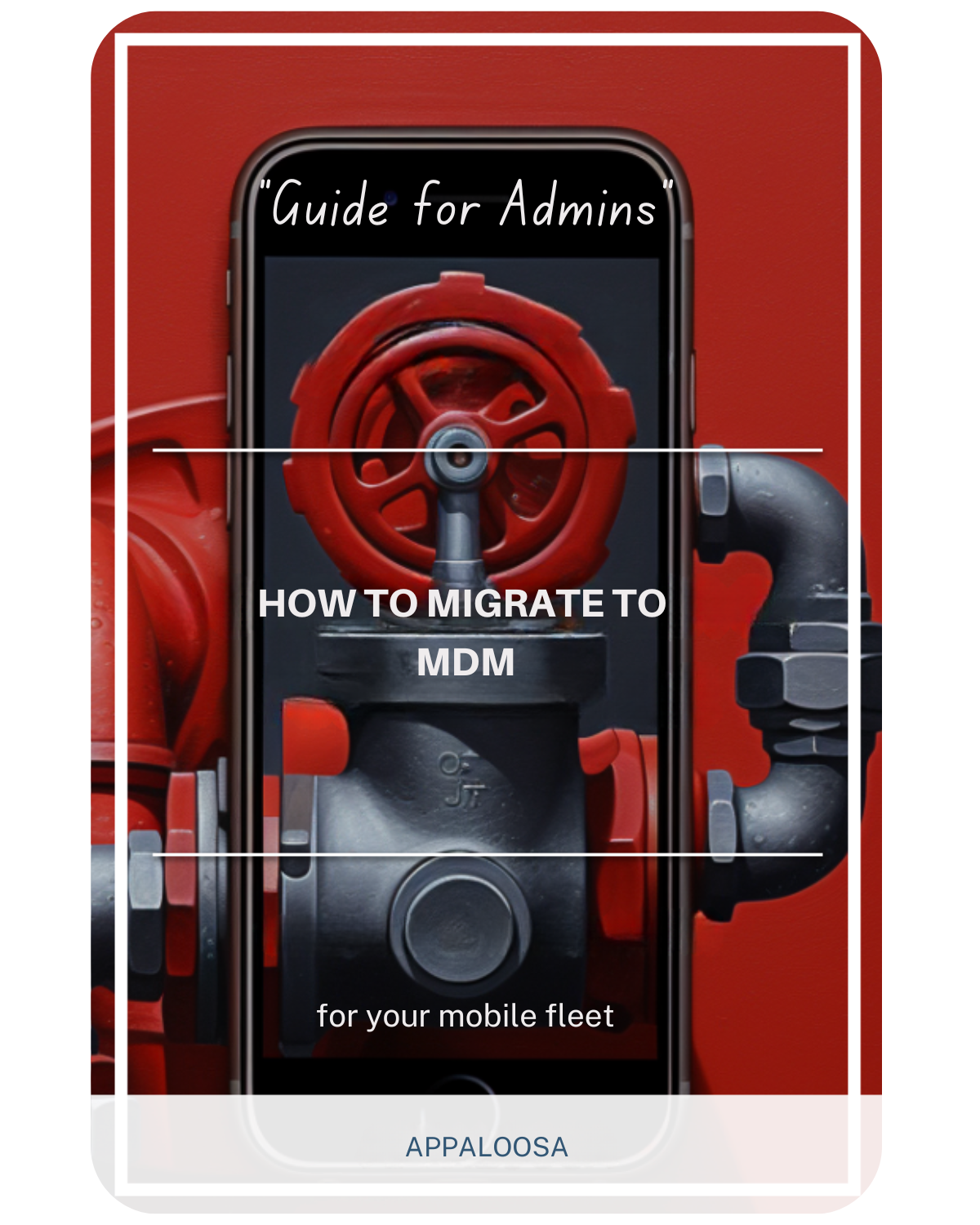Understanding App Management Software

In the current digital environment, applications management software and app management software are crucial for businesses aiming to streamline their IT processes and boost overall productivity.
Whether you're running a small business or managing enterprise-level operations, understanding how to effectively manage application portfolios—including mobile apps—is crucial for maintaining competitive advantage and operational efficiency.
Understanding Application Management Software
Management software applications are specialized tools designed to oversee, maintain, and optimize the entire lifecycle of software applications within an organization.
These solutions provide a wide range of functionalities that help businesses streamline their business processes, from initial deployment through app stores to ongoing maintenance and user support across mobile devices and desktop platforms.
Unlike basic IT tools, modern business app management platforms offer comprehensive solutions that address the complex needs of today's digital workplaces.
These cloud based systems enable organizations to centralize control over their application ecosystem, ensuring consistent performance, security, and user satisfaction across all digital touchpoints—whether on traditional computers or mobile devices.
Key Features and Capabilities
Today's app management software solutions come with features included that address various aspects of software governance:
1. Centralized Application Control
Modern provide a unified dashboard where IT administrators can monitor and manage all applications—including mobile apps—from a single interface.
This centralization enables team members to collaborate more effectively and ensures consistent application performance across the organization, which ultimately saves time in troubleshooting and maintenance.
2. Task Management and Workflow Automation
Effective application management involves assigning tasks to appropriate personnel for maintenance, updates, and troubleshooting. Advanced systems automate routine tasks and include due date tracking to ensure timely completion of critical maintenance activities. This automation saves time for IT teams, allowing them to focus on strategic initiatives.
3. Performance Monitoring and Analytics
Real-time monitoring capabilities help organizations track application performance, user adoption rates, and system health across both desktop and mobile devices. These insights enable managers to make informed decisions about resource allocation, application retirement, and new software investments.
4. User Support Integration
Comprehensive customer support features ensure end-users receive timely assistance when facing application-related issues. This includes integrated help desk functionalities, knowledge bases, and automated support ticket routing for both traditional applications and mobile apps.
Managing Mobile Applications in the Enterprise
With the proliferation of mobile devices in the workplace, app management software must now address unique mobile-specific challenges:
Mobile App Distribution
Organizations need secure methods to distribute internal applications outside public app stores.
Enterprise app management solutions provide private app catalogs where approved applications can be deployed directly to employee mobile devices.
Device and App Security
Managing mobile apps requires additional security considerations, including:
- Remote wipe capabilities for lost or stolen devices
- App-level encryption and access controls
- Compliance with mobile-specific regulations
- Integration with mobile device management (MDM) systems
Cross-Platform Support
Modern app management software must support various mobile operating systems, ensuring consistent management capabilities across iOS, Android, and other platforms used within the organization.
Benefits for Different Organization Types
Small Business Advantages
For small business owners, application management software offers particular value by:
- Reducing the complexity of managing multiple applications with limited IT resources
- Providing cost-effective cloud based solutions that eliminate the need for extensive on-premise infrastructure
- Enabling better resource allocation through consolidated application management
- Improving employee productivity by ensuring applications run smoothly and efficiently
- Significantly saves time by automating routine maintenance tasks
Enterprise-Level Benefits
Larger organizations benefit from the wide range of advanced features, including:
- Scalable architecture that grows with the business
- Enhanced security protocols for protecting sensitive data across mobile devices and desktops
- Comprehensive compliance management tools
- Advanced integration capabilities with existing enterprise systems and app stores
Implementation Strategies for Success
1. Stakeholder Engagement
Successful implementation requires buy-in from all key stakeholders. IT managers, application managers, system administrators, and end-users must understand their roles in the new system. Clear communication about how the software will improve their daily workflows and saves time helps ensure adoption.
2. Phased Rollout Approach
Rather than attempting to manage all applications immediately, organizations should consider a phased approach:
- Start with critical business applications
- Gradually expand to include mobile apps and secondary systems
- Continuously gather feedback from team members
- Adjust processes based on real-world usage
- Integrate app stores management in later phases
3. Training and Support
Investing in comprehensive training ensures all users can effectively utilize the platform's capabilities. This includes:
- Initial onboarding sessions for all users
- Role-specific training for IT staff managing mobile devices
- Ongoing education about new features and best practices
- Regular refresher courses to maintain proficiency
Selecting the Right Application Management Solution

When evaluating applications management software and app management software, consider these critical factors:
Core Functionality Requirements
- Application inventory and discovery capabilities for both desktop and mobile apps
- Performance monitoring and alerting systems
- License management tools
- Security and compliance features
- Integration with existing IT infrastructure and enterprise app stores
Scalability and Flexibility
Choose solutions that can grow with your organization.
Cloud based platforms often provide the best scalability, allowing you to add applications and users as needed without significant infrastructure investments. This approach saves time and resources in the long run.
User Experience
The platform should be intuitive for both IT professionals and end-users. Look for solutions with:
- Clean, modern interfaces optimized for mobile devices
- Mobile accessibility
- Customizable dashboards
- Self-service capabilities for common tasks
Support and Resources
Evaluate the vendor's customer support offerings, including:
- 24/7 technical support availability
- Comprehensive documentation and knowledge bases
- Active user communities
- Regular updates and feature enhancements
Special Considerations: Care Management Applications
In healthcare and social services, care management app solutions require additional considerations. These specialized applications must comply with strict regulatory requirements while providing seamless coordination between care providers, patients, and administrative staff. When managing these applications on mobile devices, organizations must ensure:
- HIPAA compliance and data security
- Integration with electronic health records
- Real-time communication capabilities
- Mobile accessibility for field workers
- Secure distribution outside public app stores
Future Trends in Application Management
The application management landscape continues to evolve with emerging technologies:
Artificial Intelligence and Machine Learning
AI-powered features are increasingly being integrated to:
- Predict application failures before they occur
- Automate routine maintenance tasks that saves time for IT teams
- Provide intelligent recommendations for optimization
- Enhance security through anomaly detection on mobile devices
Enhanced Analytics and Reporting
Modern platforms are developing more sophisticated analytics capabilities, enabling organizations to:
- Track detailed usage patterns across mobile apps and desktop applications
- Identify optimization opportunities
- Measure ROI on software investments
- Make data-driven decisions about application portfolios
Conclusion
Implementing effective applications management software and app management software is no longer optional for organizations seeking to remain competitive in today's digital economy.
By providing comprehensive oversight of software applications across all platforms—including mobile devices—these platforms enable businesses to optimize their business processes, improve user satisfaction, and make informed decisions about their technology investments.
Whether you're a small business looking to streamline operations or an enterprise seeking to optimize a complex application ecosystem that includes mobile apps and enterprise app stores, the right management platform can transform how your organization leverages technology.
By focusing on solutions that offer a wide range of features included in their core offerings, organizations can ensure they're prepared for both current challenges and future growth.
The key to success lies in selecting a platform that aligns with your specific needs, implementing it thoughtfully with proper stakeholder engagement, and continuously optimizing based on user feedback and performance metrics.
With the right approach, application management software becomes not just a tool for IT efficiency that saves time, but a strategic asset that drives business success across all devices and platforms.
